All-Anomaly Team: Five NBA outliers pulling off strange statistical feats
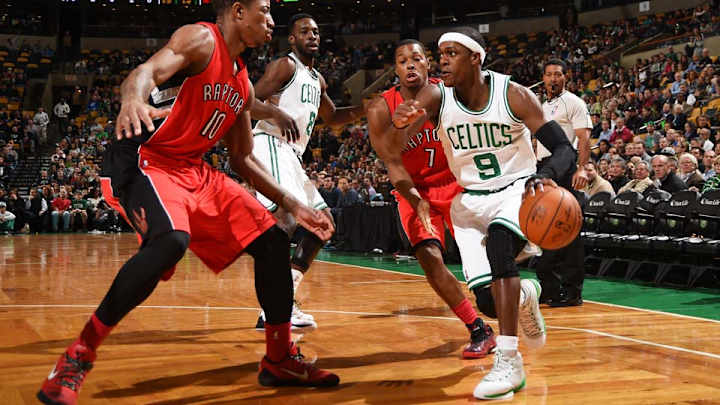
"The Point Forward All-Stars" will have a new theme each week centered on a single shared trait that brings together the team members. This week: highlighting five statistical goofballs from the opening month of the 2014-15 season.
The NBA statistics community has grown to where it can give the government a run for its money in acronyms: PER, WARP, RAPM, USG, VA, EFG, FBI, CIA, TSA, NSA, EPA. While some fans still find the clunky lingo and numbers-based evaluation off-putting, the opening month of the season has been full of enticing statistical production. If you haven’t been gawking at Anthony Davis’s league-leading Player Efficiency Rating or rubbernecking around Kobe Bryant’s sky-high usage rate, you’re missing out.
Davis and Bryant have posed some meaningful historical questions with their early work. How soon is too soon to anoint Davis as the successor to LeBron James as the league’s best player? Will Bryant’s next two seasons permanently wipe out all memories ofWizards-era Michael Jordan? But not all numbers-centric questions need to be taken so seriously.
With that in mind, the All-Anomaly Team highlights players whose unique statistical work just might be worthy of a chuckle or two. These five players have stuck out from box scores like a handful of sore thumbs.
(All stats through Nov. 18 via NBA.com.)
The Floor-Shrinker: Elfrid Payton
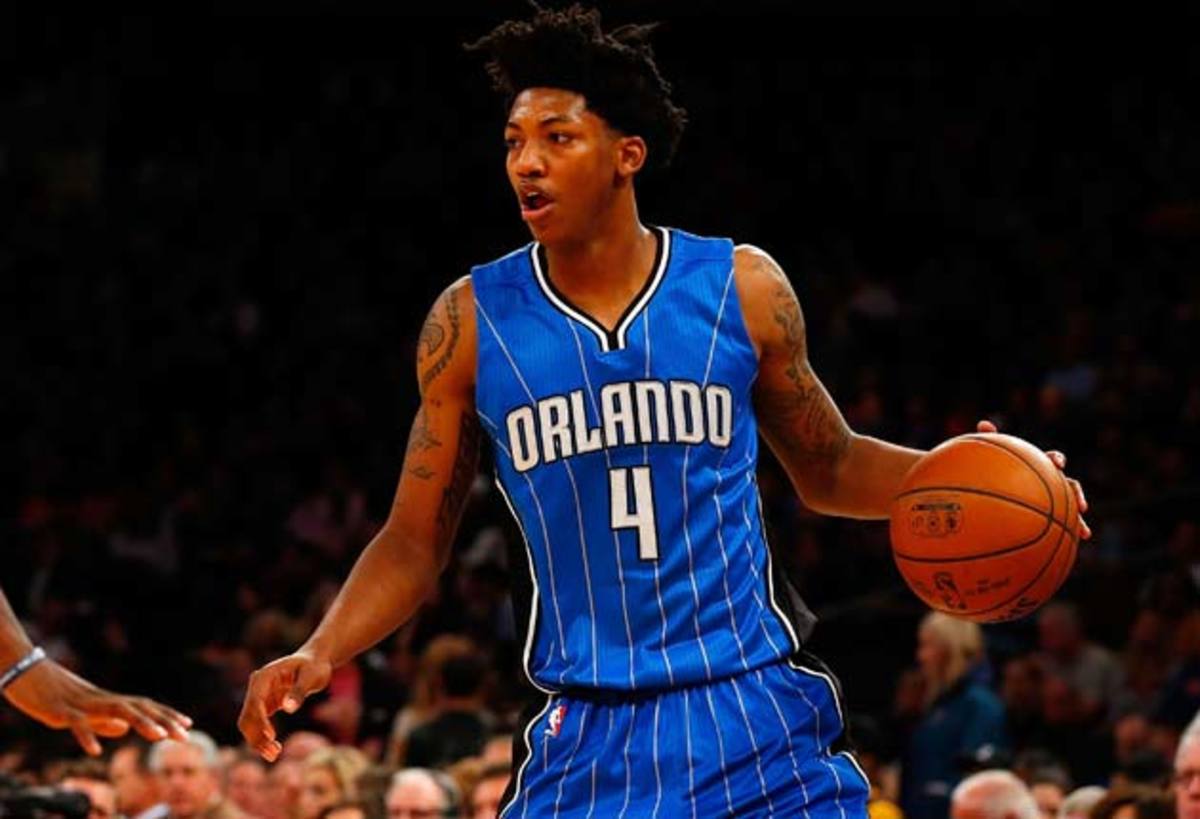
All hail King Elfrid, the No. 10 pick in June’s draft, for his unique statistical portfolio. The rebuilding Magic handed the keys to the 20-year-old Payton, before Victor Oladipo’s return from injury last Friday, and he hit the ground running. That hasn’t always been a good thing: Among 66 qualified point guards, Payton ranks No. 62 in PER, No. 66 in Value Added, No. 65 in true shooting percentage and No. 54 in turnover rate.
Elfrid Payton still learning how to contribute in the NBA
Growing pains were expected for Payton, made the leap from little-known Louisiana-Lafayette, and he deserves credit for sticking to his aggressive style on both ends. He often appears to be moving in fast forward compared with the other nine players on the court, and he’s not bashful about attacking the paint. His adjustment to NBA-caliber defenders will take awhile: He is shooting just 34.8 percent in the basket area and he has already had his shot blocked 21 times in 12 games, tops among non-centers. (The NBA might consider a shot-blocking competition for All-Star Weekend in which Payton and Sixers guard Tony Wroten fly toward the basket at full speed, serving up circus attempts for the likes of Davis, Serge Ibaka and Larry Sanders to smash into the audience or pin against the glass.)
A simple glance at Payton’s “Chinese flag” shot chart -- all red -- is enough to realize that his limited range, his biggest weakness entering the draft, has been a serious issue. Remarkably, despite playing 297 minutes (24.8 per game), Payton has attempted just two three-pointers and made none. Somehow, those numbers overstate his desire to shoot from outside. One of his attempts occurred at the end of a quarter and the other came when his defender slipped to the ground, leaving him 10 feet of space and plenty of time to set his feet. Although Oladipo’s return throws Payton’s role into question, the rookie could be headed toward a season like John Wall’s 2011-12, when the Wizards' guard went just 3-for-42 from beyond the arc despite playing more than 2,300 minutes.
Here’s how Payton’s floor-shrinking stacks up against that of other guards. On the opposite end of the spectrum, Blazers guard Damian Lillard leads the NBA with 35 three-pointers, hitting one every 11 minutes that he is on the court.
Most minutes played without a three-pointer (guards)
• Elfrid Payton, Magic: 0-for-2 in 297 minutes
• Shaun Livingston, Warriors: 0-for-0 in 146 minutes
• Andre Roberson, Thunder: 0-for-3 in 119 minutes
• Andre Miller, Wizards: 0-for-1 in 116 minutes
• Xavier Henry, Lakers: 0-for-0 in 74 minutes
The Pass-Firster: Rajon Rondo
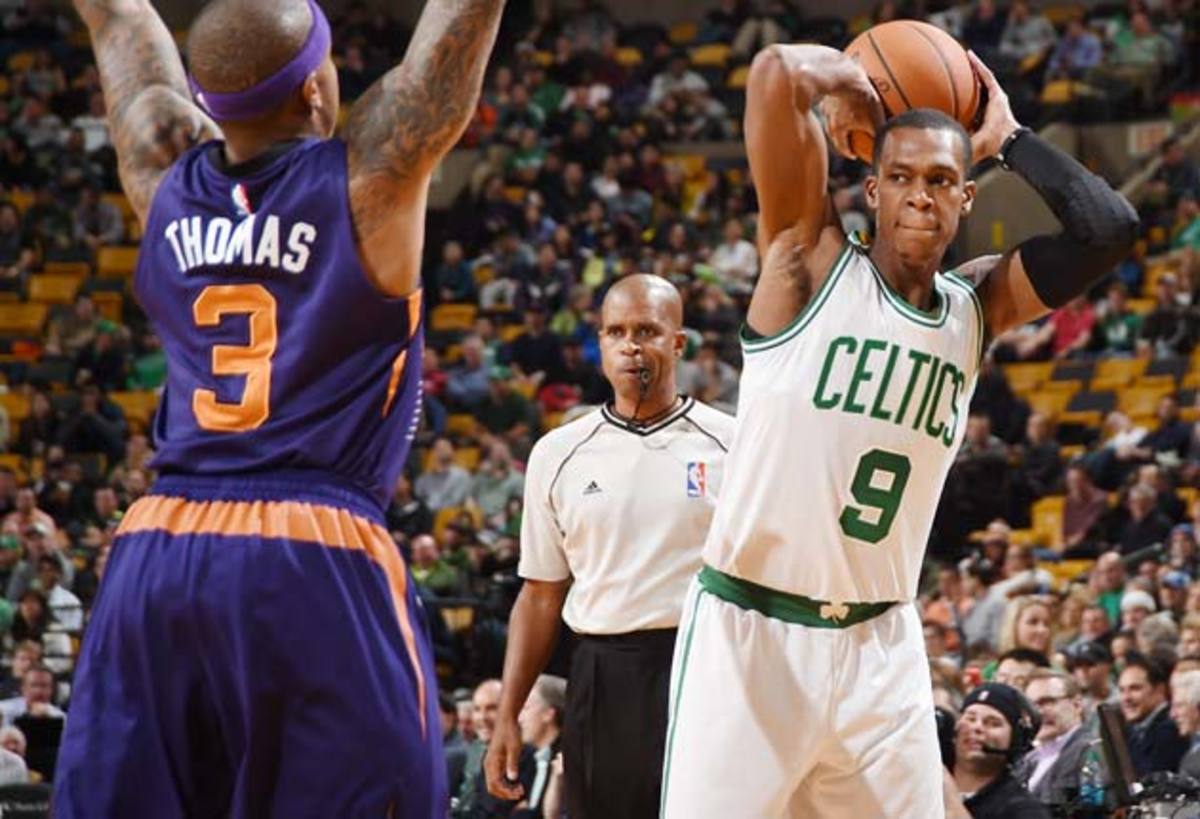
The designation “pass-first” gets tossed out often, usually as praise for an unselfish point guard. There can be a nostalgic element to the label, as some view the rise of so-called “shoot-first” ball-handlers and combo guards to have muddled the point guard’s job description.
All-Brick Layers Team: Kobe playing like Wizards era Michael Jordan
That debate aside, there’s no question that Rondo has regularly existed in his own universe when it comes to moving the rock. The Celtics' point guard led the NBA in assists in 2011-12 and '12-13, and he’s the early leader this season, with 11.6 per game. The NBA’s player tracking information further underscores Rondo's distinctiveness as a passer. Name a category and he tops it or comes close. Rondo’s 81.4 passes per game rank second to Chris Paul’s 83.9; no one else averages more than 71. Rondo’s 21.6 assist opportunities (the number of passes a player makes that could lead to an assist if the teammate scored) rank first by a considerable margin, as do his 27.1 points created by assists.
Paul is Rondo’s top competition as a passer. The Clippers’ All-Star point guard has led the NBA in assists three times and has averaged 10 or more in four of the last eight seasons. However, never during his 10-year career has Paul registered more assists than field goal attempts. Rondo, meanwhile, is on pace to do exactly that for the third time (he also did it in 2010-11 and '11-12).
How rare is it for a player to be so pass-first that he actually records more assists than shot attempts? Only four players who have logged at least 20 minutes this season have pulled it off. Not surprisingly, Rondo is way ahead on that short list.
Players with more assists than field goal attempts
• Rajon Rondo, Celtics: +11 in 266 minutes
• Ricky Rubio, Timberwolves: +3 in 144 minutes
• Ronnie Price, Lakers: +2 in 217 minutes
• Andre Miller, Wizards: +2 in 116 minutes
[pagebreak]
The Hack-Master: Shawne Williams
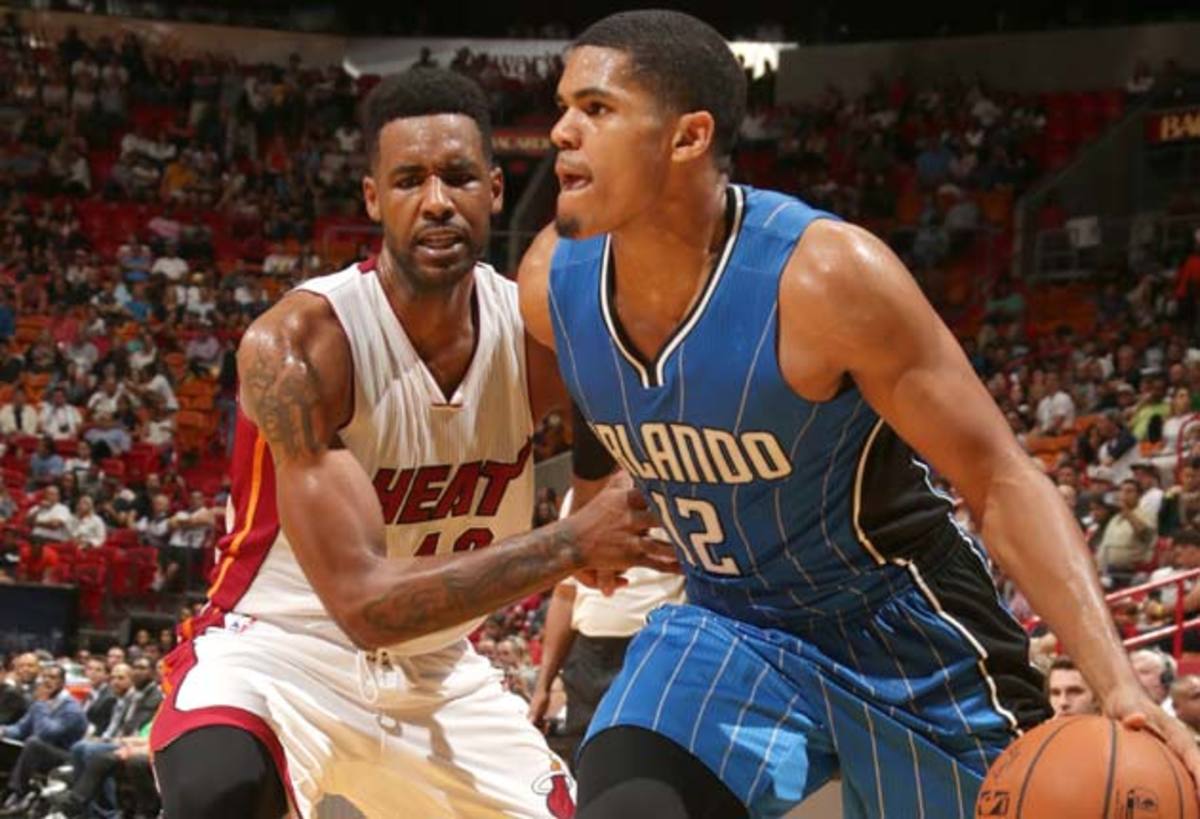
Fouls are generally an afterthought in the NBA. Unless it’s to lament how a player is forced to the bench with foul trouble during key situations, to marvel at how rarely a superstar like LeBron James fouls out or to worry whether young behemoths like DeMarcus Cousins or Andre Drummond are treated fairly by the referees, there just isn’t that much discussion around the topic.
While You Weren't Watching: 10 most underrated NBA plays of the week
For giggles, though, have you ever wondered which players are just out there hacking away? Cousins, for example, has committed 52 fouls, while Drummond has committed 47. But Sacramento’s franchise center has absorbed far more punishment than he has delivered: Cousins has already been fouled a league-high 89 times. Detroit's Drummond has drawn just 28 fouls.
Foul differential -- the number of times a player is fouled compared with the number of times he commits a foul -- tells an interesting story. How better to home in on the hackers than to see who delivers more pain than he receives? If we continue to use the Cousins/Drummond examples, there’s really no comparison. Cousins’ foul differential is +37, fifth in the NBA, trailing only four high-usage, aggressive shooting guards in James Harden, Kobe Bryant, DeMar DeRozan and Jimmy Butler. Drummond, meanwhile, is -19 in foul differential, ranking eighth worst. Clearly, Pistons coach Stan Van Gundy has his work cut out for him.
So who are the worst of the worst at hacking? Interestingly, all five positions are represented among the top 10. Even more interestingly, players with great defensive reputations and terrible defensive reputations are also included.
Two players tie for the worst foul differential in the NBA: Heat forward Shawne Williams and Bucks center Larry Sanders. Although Sanders has accrued his fouls in fewer minutes, let’s give the “Hack-Master” title to Williams as a small token of respect for the challenges he is facing in Miami. As one of only three players to start all 11 games for Erik Spoelstra, the 6-foot-9 Williams is asked to cover all sorts of ground in the Heat’s aggressive defensive system and often is matched up against bigger opponents. Watching tape of Williams’ 44 fouls, it’s clear that the journeyman is an equal-opportunity pain-deliverer. He will foul jump shooters, putback attempts, bigs, smalls, you name it.
This particular foul was a personal favorite based on its sheer goofiness. As if the frantic spin and box-out hip check from Williams weren’t enough, Norris Cole’s exasperated reaction puts it over the top. Twice, Miami’s point guard raises his arms to show Williams what he was supposed to be doing. It’s probably worth noting, in closing, that Williams has yet to foul out of a game – although he has accumulated five fouls four times.
Players with worst foul differential
• Shawne Williams, Heat: -31 in 317 minutes
• Larry Sanders, Bucks: -31 in 224 minutes
• Tony Allen, Grizzlies: -26 in 300 minutes
• Carlos Boozer, Lakers: -21 in 307 minutes
• Jason Thompson, Kings: -20 in 280 minutes
• Wilson Chandler, Nuggets: -20 in 281 minutes
• Quincy Acy, Knicks: -20 in 185 minutes
• Andre Drummond, Pistons: -19 in 307 minutes
• Shane Larkin, Knicks: -19 in 315 minutes
• Miles Plumlee, Suns: -18 in 281 minutes
The Contact-Avoider: Marvin Williams
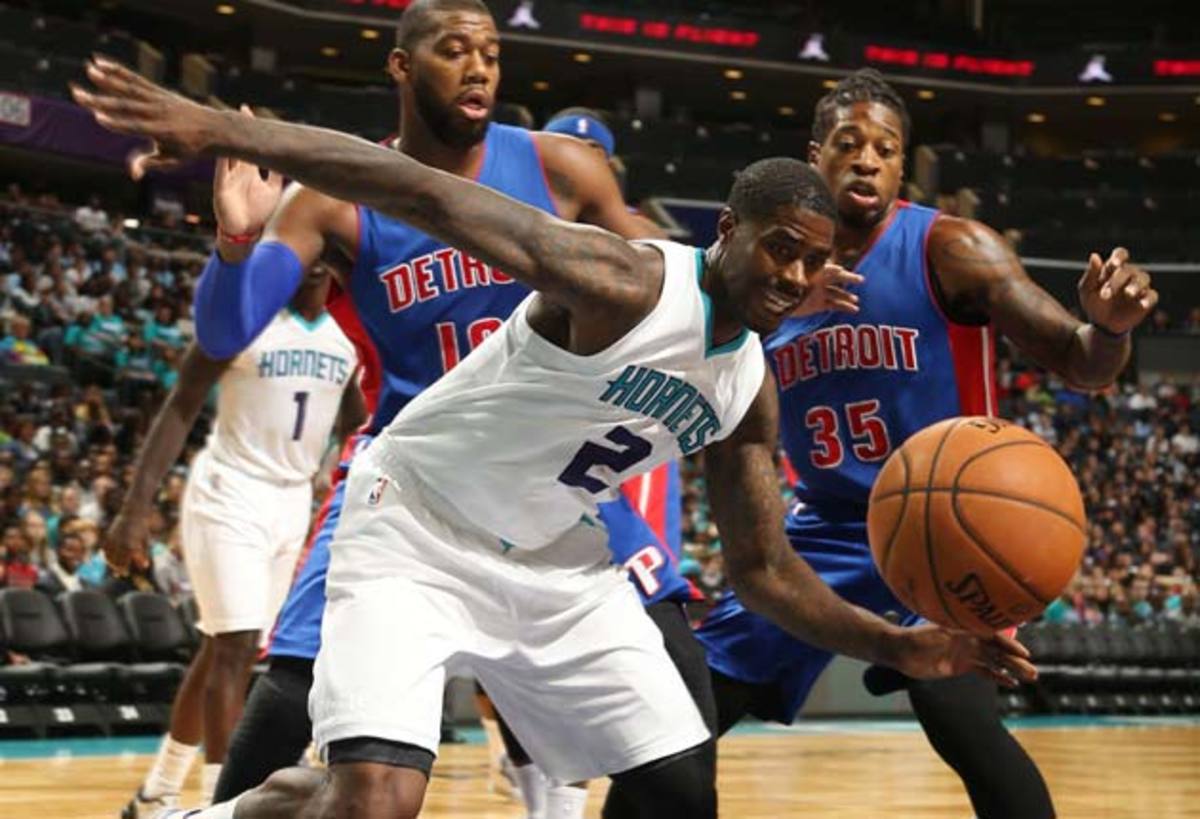
Hopefully SI.com’s rundown of stretch fours last week made it clear that the best players in that group can do many helpful things on offense. Cavaliers forward Kevin Love, for example, has been an elite rebounder for years and he’s just as capable of producing points and free throw attempts in the paint as he is beating opponents with his jump shot. New Orleans’ Anthony Davis, the future of the stretch four position, is already marvelous in almost every possible way on both sides of the ball; he will go from “devastating” to “completely unstoppable” once he extends his shooting range to the arc.
Trends: What do the NBA's most improved defenses have in common?
Needless to say, not all stretch forwards boast such diverse skills. On the opposite side of the spectrum, the stretch four label can be used on players whose primary job is really just to stay out of the way on the weakside so that premier low-post scorers and/or lead ball-handlers can enjoy a little extra space.
Nobody -- nobody! -- fits that description this year quite like Hornets forward Marvin Williams. Signed last summer to replace Josh McRoberts in Charlotte’s starting lineup, Williams is an afterthought on a team whose offense runs through All-NBA center Al Jefferson and starting guards Kemba Walker and Lance Stephenson. Williams, a combo forward with a career 33.6 three-point shooting percentage, isn’t ideally suited to this task, but he’s trying to make it work. Thirty-five of his 62 field goal attempts have been three-pointers, and his shooting percentages have been fine.
The impressive aspect of Williams’ performance is his unmatched ability to avoid doing anything that might result in a trip to the charity stripe. In fact, Williams has yet to attempt a single free throw despite starting Charlotte’s 11 games and logging 274 minutes (24.9 average). That seems almost impossible -- especially for a 28-year-old player who was the No. 2 pick in 2005 and who averaged more than four free throw attempts for three straight seasons during his early 20s. But it’s true.
Here’s the list of players who have logged the most minutes without attempting a free throw this season. Williams is joined by multiple stretch forwards, but note that he’s played way more than double the number of minutes of any other player without a free throw attempt. Ridiculous! The good news is that Marvin Williams and the Hornets are set to play Shawne Williams and the Heat on Sunday, so perhaps the “Contact-Avoider” title will be short-lived for Marvin once he runs into the “Hack-Master.”
Most minutes played without a free throw attempt
• Marvin Williams, Hornets: 0 FTA in 274 minutes
• Mike Miller, Cavaliers: 0 FTA in 101 minutes
• Luke Babbitt, Pelicans: 0 FTA in 82 minutes
• Austin Daye, Spurs: 0 FTA in 77 minutes
• Matthew Dellavedova, Cavaliers: 0 FTA in 59 minutes
[pagebreak]
The Rim-Forsaker: Nikola Pekovic
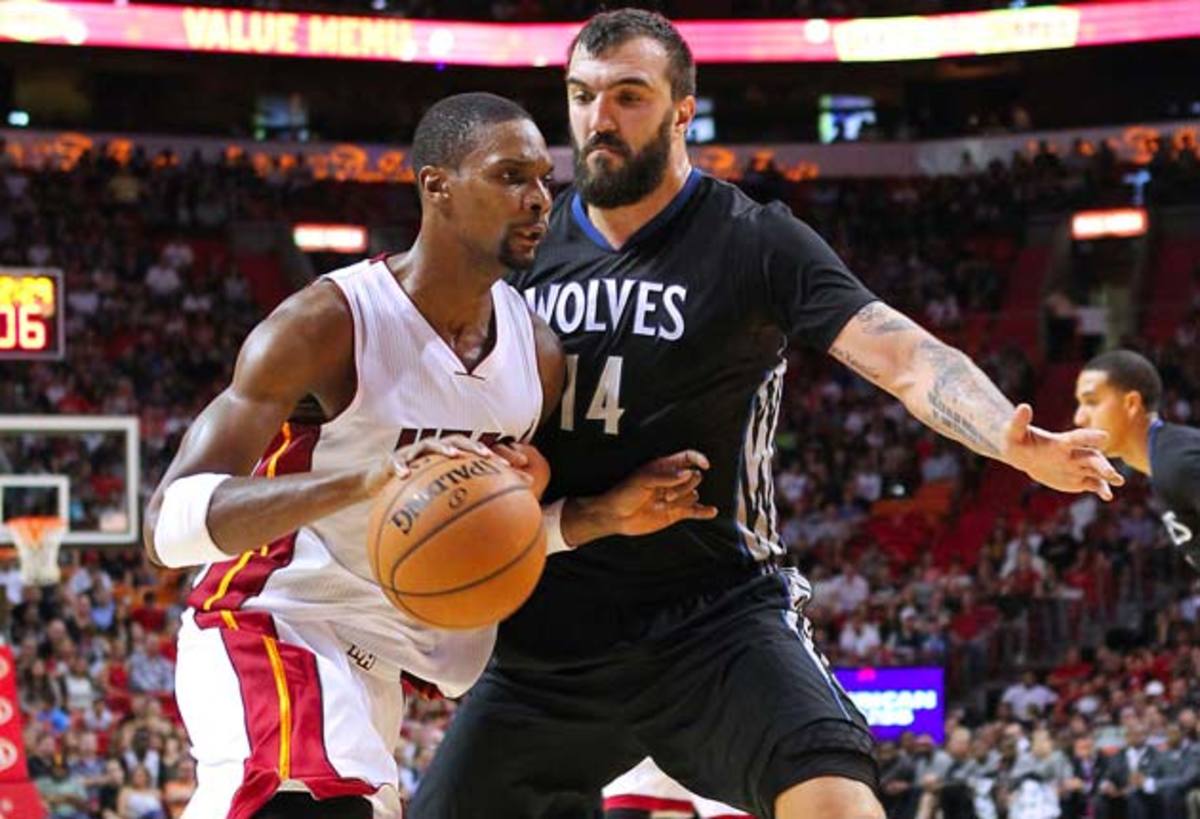
In highlighting some of the NBA’s most improved defenses, SI.com noted that many of them added or regained impact centers who helped shore up the team’s rim-protecting capabilities. On the flip side, Minnesota ranks 29th with a defensive rating of 110.9, and the Timberwolves have regressed compared with last season by a wider margin (-6.8) than any team besides the Lakers, who are on pace to post historically awful defensive numbers.
Open Floor: Anthony Davis' stunning ascent, Rondo's trade value and more
A lack of rim protection is a huge issue for the Timberwolves, who allow opponents to shoot 64.2 percent from within five feet, the third-highest mark in the league. Pekovic, the starting center, is a major player in this limitation. A ground-bound, brutish player who has made his living with offense and on the glass, Pekovic has failed to average one block in any of his five seasons. Pekovic is off to an even more difficult start this season, in part because of foot problems. “He has no lift,” teammate Corey Brewertold the Pioneer Press this week.
That lack of lift is really showing on both ends. It was noted above that rookie point guard Elfrid Payton is leading the league in getting his shot blocked. That’s pretty much what you would expect: a young, aggressive guard who plunges into a forest of bigs and comes out with plenty of rejections to show for his efforts. Fellow guards like Tony Wroten, Donald Sloan and Ty Lawson are also among the leaders in getting denied.
Unfortunately, so is Pekovic. Minnesota’s 6-11 big man has had his shot blocked 16 times while registering just two blocks himself. That -14 differential is the third worst in the league and by far the worst among centers; Utah’s Enes Kanter and San Antonio’s Aron Baynes, two players who generally fit the same physical profile as Pekovic, are next in line at -7.
In case you were wondering, the league’s elite rim protectors are -- by and large -- rarely blocked themselves. Anthony Davis (+32), Indiana’s Roy Hibbert (+29), the Clippers' DeAndre Jordan (+23), Oklahoma City’s Serge Ibaka (+19) and Golden State’s Andrew Bogut (+17) make up the top five players in block differential. None of them is in the top 50 in blocks against.
Below, find the 10 worst block differentials. Pekovic is two inches taller than anyone else on the list, and five inches taller than anyone else in the top five. By failing to protect Minnesota’s hoop on defense and by getting parried so regularly on offense, Pekovic is a true “Rim-Forsaker.” This isn’t necessarily a new title for Pekovic, who was -47 in block differential in 54 games last season (70 blocks against, 23 blocks).
Players with worst block differential
• Elfrid Payton, Magic: -18 in 297 minutes | Height: 6-foot-3
• Tony Wroten, Sixers: -16 in 325 minutes | Height: 6-foot-6
• Nikola Pekovic, Timberwolves: -14 in 240 minutes | Height: 6-foot-11
• Donald Sloan, Pacers: -14 in 358 minutes | Height: 6-foot-3
• Ty Lawson, Nuggets: -12 in 323 minutes | Height: 5-foot-11
• Tobias Harris, Magic: -11 in 441 minutes | Height: 6-foot-8
• Lance Thomas, Thunder: -11 in 332 minutes | Height: 6-foot-8
• DeMar DeRozan, Raptors: -11 in 340 minutes | Height: 6-foot-7
• Zach Randolph, Grizzlies: -10 in 356 minutes | Height: 6-foot-9
• Alec Burks, Jazz: -10 in 415 minutes | Height: 6-foot-6
